River Birch vs Weeping Willow for wet area
Hi,
A part of our yard gets very wet during rainstorms and does not dry out for days afterwards. Our landscaper had suggested a weeping willow for the area since those trees really suck in water. Yes, it will get very big - in about 20 years. He said it would be a good quick start to keeping our yard dry and we can revisit cutting it down if/when it gets too big. The tree will be planted about 15' away from 2 houses.
Another option is the River Birch which also gets big, but not as wide. It is good for wet areas, but my landscaper said it would not be as good as the WW. He said the Willow leafs out earlier in the spring and drops its leaves later in the fall than the birch, so it would be sucking the water down for more months than the Birch.
Which tree would you choose? I really want to do something because each time it rains, our yard is muddy for up to a week and no one can play outside.
Thanks so much.
Michelle
Comments (38)
quirkyquercus
17 years agoYeah they thought planting trees would dry out the everglades too you know. Hey, if that's the purpose of planting the tree, don't waste your time. I'd go with the River birch, it's one of my favorite trees, much better than th weeping willow. Those are nice too but very weak wooded and don't always live too long. Just because it's a wet ground doesn't mean the birch will like that spot. They tolerate some flooding and need full sun.
Related Professionals
Arlington Landscape Architects & Landscape Designers · Horsham Landscape Architects & Landscape Designers · Sahuarita Landscape Architects & Landscape Designers · Aberdeen Landscape Contractors · Bethel Park Landscape Contractors · Dunwoody Landscape Contractors · Gainesville Landscape Contractors · Oklahoma City Landscape Contractors · Westchester Landscape Contractors · North Hills Landscape Contractors · Levittown Siding & Exteriors · Massapequa Siding & Exteriors · Oak Creek Siding & Exteriors · Hershey Decks, Patios & Outdoor Enclosures · Reading Decks, Patios & Outdoor Enclosuresspruceman
17 years agoThe weeping willow, especially the golden weeping willow, which is one of my favorite trees is not as short lived or weak, in my experience, as some suggest. But, I think it is too large a tree for the place you have in mind.
--Spruce
lynbornman
17 years agoI love weeping willows but I don't think you have the right space for them...too close to houses. I also would not recommend planting something you may have to cut down in 15-20 years. That is so many years you will have lost and could have been growing a more permanent tree. I personally do not like river birch although I have one because my husband loves them and forced me to get one. I think they are weak, short lived and when they lose one of their branches in a bad storm they never look the same. I also think they are way overplanted. Around here almost every subdivision house has a specimen river birch in their front yard or front bed. I would consider a bald cypress. They are quite pretty and will grow pretty fast in the conditions you are describing. I agree with all the others though that your isssue is probably best fixed by digging some trenches and drain pipes.
garden_obsessed
17 years agoMy inlaws have a weeping willow and it's an extremely messy tree. Given the choices I would choose the River Birch but I also like the idea of the Bald Cypress. However, I don't agree with the idea of planting a tree in the location you described for the purpose you described.
The reason I say this is because if you have a lot of water there already for a period of years, and this area is 15 feet from your house, I would have to wonder about the condition of your foundation. I don't know how old your house is but lots of water for many years by the foundation can cause it to fail (rot/crumble). Tree roots invade the damage causing even more damage and expense. Even if your foundation is good, a tree like a willow and probably even the river birch can have invasive roots and can cause damage planted so close to your house.
Repairs to your foundation caused by water and/or tree roots, planting and maintaining a tree, removal of an adult tree, the frustration of clogged gutters (from litter), the potential problems of a tree or large tree limb falling on the house from lightning or high winds because it was planted too close to the house, all of this seems to be very expensive and time consuming. I wouldn't want the risk and hassle. The best thing is for you to redirect the water to a proper drainage site with draintile or another similar type of solution. It is much less expensive and ultimately much less of a hassle. You would be much happier with the results.
Best of luck,
G.O.yatesd
17 years agoIt is my understanding that Willows have extremely aggressive root systems. Maybe it will help with the moisture, but it will most likely hurt your foundation.
My vote is for the River Birch, but don't expect miracles. I think it will be a good choice because they are relatively narrow.
--
Dougwisconsitom
17 years agoThuja also tolerate high moisture conditions and are seldom the victims of storm damage of any consequence. In your zone, the' Green Giant' cultivar could work. And these trees, as much as any, like to drink up a lot of water. Properly sited, one or more of these could be good, permanent additions to the landscape.
I like the golden weeping willow a lot, but as Spruce mentioned, doesn't sound like this spot would accomadate its' ultimate spread.
+oM
brandon_2010
13 years agoI did the same thing with my river birch. I planted it in a spot in the yard where water was pooling up. It works the water is gone these trees really suck up alot of water. The first 3 years was a struggle for it though I think it was to much water but once it took off the water hasn't came back. But it did kill all the grass under it and its a messy tree everytime the wind blows I get twigs everywhere and its huge not sure if you would want it within 15 of any house.
JIrene1
9 years agoWe have a similar problem in our yard - poorly draining clay soil, coupled with an underground spring we discovered recently! We had a weeping willow ~35-40' from the spring for many years, but due to it's age and development of hollows that raccoons decided to live in, we had to remove it. We are actually now considering putting in a new one ~10' from the spring, because it did seem to make a difference with the standing water issue. However, we spent thousands having professionals trim the old one every couple of years, because it was so huge that it's branches hung over our neighbor's garage and dropped debris all over it. So, while it gets my vote for the water issue, the maintenance costs and potential home for critters aspect are not fun, which is why we're considering a river birch too.
Toronado3800 Zone 6 St Louis
9 years agoFifteen feet huh...
That weeping willow will require you to buy a chainsaw and start practicing now for it will need removed in the next decade as it rubs up against your house. I can go measure my neighbor's ten year old weeping willow. Its a great tree. My kid can climb it. Just it is HUGE.
Would you guys trust a fella like Metasequoia 'Ogon' there? regular Metasequoia would need limbed up almost for sure, Ogon seems more narror...what's the cool new improved 'Ogon' cultivar? They grow well in St Louis zone 6, ask me or the Missouri Botanical Garden.
Bald cypress is another classic swamp tree. It won't die if you ever improve the drainage as it grows in normal yards as well.
K
3 years agoThis is a very old thread, but I am also wondering what to plant. I have a LOT of space between me and my neighbor, and just took down a 40’ oak tree that wasn’t thriving, as the clay soil was too wet (per the local arborist opinion)
I am in zone 6b or 7, depending on the map. It would get near full sun. We have major deer issues, I would have to protect whatever I plant
This tree would be a focal point from curb appeal point of view. Currently thinking weeping willow (first choice) or perhaps the river birch
I really would love a shade tree, and love maple and oak— but I know that it’s not a good spot for oak due to moisture

Little Red Truck Landscapes
2 years agoI handle residential drainage for a living and the person that told you that planting a tree will not help your water issues is wrong. The Pennsylvania state BMP (best management practice) for drainage states that the number one thing for drainage is trees. a single mature white oak can absorb 11,000 gallons of water a year. A river birch or bald cypress can absorb just a bit less. so get planting.
ken_adrian Adrian MI cold Z5
2 years agotree time is counted in decades ... and if you are going to rely on a tree to solve a drainage problem.. well.. you may have decades of problems.. before the tree is mature enough to have a mature enough root mass to suck up that much water ..
kengardengal48 (PNW Z8/9)
2 years agolast modified: 2 years agobtw, a tree will only "suck up" as much water as it needs to keep fully hydrated. If more water is present than it needs, that water will remains until it is either absorbed into the soil or evaporates. Or is directed away by a swale or similar drainage solution.
Planting a tree is NOT the way to solve drainage or standing water issues!!
sah67 (zone 5b - NY)
2 years agolast modified: 2 years agoAh yes: nothing like totally inaccurate advice on a months-old thread from a “professional” whose business has an expired website and no Google listing.
stillinwisconsin
2 years agolast modified: 2 years agoThis thread is old and I’m certainly no expert. But my property gets runoff with the spring thaw and a natural swale that runs by my house where all this water runs to a drain that goes to the river across the street… and by early summer it’s dry again. it pools in a swamp in my back yard, the overflow goes to the swale
The amount of drain tiles we’d have to install for periodic and temporary seasonal water issues isn’t worth the $ spent. Nonetheless, I still want trees and shrubs to aid in preventing erosion. It’s not a solution to the natural waterway, and there will never be a solution unless the township comes in and installs a sewer and runoff system which in my lifetime or my kids lifetime will happen, never.
I’m on a little over an acre. I’ll be planting bald cypress where we get a swamp/pond every spring, a Dawn redwood and a Catalpa tree, unless I learn otherwise that these aren’t ideal for me but so far it’s looking good. Partly because I don’t want a monoculture, partly because of water issues, partly because I love to provide for wildlife but mostly because I’m trying to make up for my neighbors deforestation and the lack of privacy she has created. I have also planted a swamp white oak. None of these are planted close to my house and all will be sufficiently spaced for proper growth. The periodic standing water/runoff is at the back half of an acre.
I remember reading the insane amount of water that a Dawn redwood uses up in just a day. I can’t find the article now but it was hundreds of gallons, maybe 250 gallons???.
Not here to argue with anyone but I find it hard to believe that planting a Dawn redwood (or any of the others) will not help with flood related issues. or i should say…at least to help reduce the amount of standing water (the property will still always flood with the spring thaw).
My adjoining neighbor who owns higher land behind us is taking trees and shrubs down at an alarming rate, and all three properties down the line here next to me at a lower elevation seem to have more standing water and saturation issues ever since.
So please educate me on your stance if you care to. I’m interested in learning more. If plants play no part in this, why on earth would we all create rain gardens. Or maybe this is all a matter of semantics.
But I’m really here to say this for anyone else who reads this thread in the future … I would recommend against a weeping willow for reasons other than anything mentioned here. I’m across the street from the Fox River. The water table here is high, and much worse on the river side of the street and no amount of drainage will ever make a difference next to the river. We have very sandy soil and in the past 10 years I have seen two otherwise healthy and very mature weeping willows just fall over in high winds. It didn’t break or snap, the whole tree, root system and all, just pulled out of the earth and left a huge hole behind. Sandy soil plays a huge part in that, but they are very shallow rooted and I would not want that tree planted anywhere near a structure of mine or anyone else’s for that matter. for the record, these trees weren’t on the river front they were set back away from the river on ”dry” land
Is it the Dawn redwood or the bald cypress or maybe both that have a really deep taproot. Dawn redwoods roots can be aggressive if I remember correctly and can push sidewalks up if planted too close to a foundation, but I also read somewhere they don’t like root competition and need room to grow (obviously). but i would think that would be far better anchored than a willow
I think it’s the bald cypress that sends up knuckles or whatever they’re called. Another disadvantage to planting that tree if you have plans to mow around it. But it will thrive in standing water if you have the room for it in which case you won’t be mowing there anyway.
just some thoughts from a novice
P.s. I’m in Wisconsin (obviously haha)
also disregard my comment about the raingarden i had this idea in my head these plants are used to soak up moisture but i see its purpose is different than thatgardengal48 (PNW Z8/9)
2 years ago"So please educate me on your stance if you care to. I’m interested in learning more. If plants play no part in this, why on earth would we all create rain gardens. Or maybe this is all a matter of semantics."
You may be misunderstanding the purpose of a rain garden. They are intended to collect rain water run-off at some low point and allow it to dissipate into the soil naturally. The plants are selected and planted because they will tolerate both very wet and also very dry conditions (at different times of the year), not because they have an ability to suck up excess moisture.
btw, neither the dawn redwood nor the bald cypress have taproots. In fact they are very shallowly rooted, as are the vast majority of trees. But both do produce a form of buttressing (the redwood with its trunk and the cypress with its 'knees' or pneumatophores as well as its trunk) and these help the trees be stabilized in soft, soggy soils. So less prone to falling or blow overs.
And yes, I think it IS a case of semantics :-) Somehow the idea that plants that tolerate boggy or even wet conditions translate to an ability able to suck up excess water. They don't. They will only take up as much as they need. Plants are not going to dry out a wet garden although they may be perfectly happy growing there. For that you need a drainage plan and swales or directed run-off to a rain garden or pond.
stillinwisconsin
2 years agoWe cross posted i edited my irignal post to say disregard my comment about the raingarden because yes, you are correct! lol
stillinwisconsin
2 years agoI remembered reading one of these had a taproot and perhaps it was the bald cypress
somewhere else i read it will grow a tap root under ”ideal conditions”
but this link seems to state that it in fact does have a deep taproot
https://plants.ces.ncsu.edu/plants/taxodium-distichum/
with regard to your comment that a tree is only going to drink as much as it needs, i agree with that statement
by that same standard, if your standing water isn't too excessive, and you have a tree that drinks a lot, like the dawn redwood as an example, then i don't see the logic in believing it won‘t help.
so both may be true depending on the volume of standing water you are trying to alleviate, it COULD very well be practicalcecily 7A
2 years agoHave you considered the possibility that an actively growing tree uses more water than a dormant tree? If the standing water tends to occur during a tree's dormant period (winter precip/spring run off) then you shouldn't expect the tree to absorb it.
stillinwisconsin
2 years agolast modified: 2 years agoTrees aren’t dormant until summer ….. they wake up in the spring, not summer
I have buds right now on some of my trees and snow is melting they’re already awakegardengal48 (PNW Z8/9)
2 years ago"Trees aren’t dormant until summer"
I have to believe there is typo lurking here :-) Or at the very least, some misinterpretation of exactly what plant dormancy is and when it occurs on the vast majority of temperate zone plants. If not, then an explanation is necessary to suss out the reasons behind this bizarre statement.
cecily 7A
2 years agostillinwisconsin, you can obviously plant whatever trees you like on your own property and I wish you well. You are posting here giving incorrect information which could affect the choices of other homeowners.
sah67 (zone 5b - NY)
2 years agolast modified: 2 years agoTrees aren’t dormant until summer"
"I have to believe there is typo lurking here :-)"
It was awkwardly phrased (I had to read it a few times), but I think stillinwisconsin was trying to say was that trees don't remain dormant until summer. I think there's still a lack of understanding in regards to "dormancy" and "active growth" not being the only two options. There are lots of "in-between" or transitional periods as well. Just because your trees are starting to wake up doesn't mean they're "in active growth."
stillinwisconsin
2 years agofor those interested in science based information ….
Center for Watershed Protection and the value of urban trees:
https://www.cwp.org/making-urban-trees-count/stillinwisconsin
2 years agomore info from the environmental protection agency
the claim that “trees only uptake as much water as it needs” is grossly oversimplifying a very complex matter
https://www.epa.gov/green-infrastructure/what-green-infrastructure#Urbantreecanopy
https://www.epa.gov/system/files/documents/2021-11/bmp-urban-forestry.pdfgardengal48 (PNW Z8/9)
2 years agoIf all one knows about arboriculture is obtained just from Internet surfing, it is not all that hard to comprehend how misunderstandings can occur :-)
Tap rooted trees are pretty rare....only around 5% of tree species ever develop a tap root. And most of those that do do so only in the seedling stage, with tap root dissipating once the tree has developed sufficiently to produce a laterally spreading root system. ('Baldcypress seedlings develop a taproot, and at least some planted baldcypress up to 25 cm (10 in) in d.b.h. maintain taproots.' USFS). It needs to be understood that in most cases, the tap root is primarily for anchorage. The fine feeder roots - completely surface oriented - are what are responsible for accessing and absorbing soil moisture. And nursery grown trees, which I assume constitute the bulk of those planted in gardens and not found growing naturally in cypress swamps, never develop any permanent tap root. Even field grown trees that are sold B&B are lacking any sort of tap root, as it has been removed with the harvesting.
btw, the second link did not work. And the first addresses nothing relevant to this discussion, as they are discussing how urban trees can reduce storm water run off by canopy diversion, not by sucking it up by the roots.
And if these trees are such water hogs (they are not), how does one explain that they grow perfectly well under normal garden conditions with little to no supplemental irrigation? In fact, most sources discussing bald cypress indicate that garden grown trees - those grown in garden soil with average moisture and not subject to periodic flooding or extended periods of standing water - grow better (faster, with denser canopies) than do those growing in their swampy natural habitat.
There is also a small grain of logic involved. If these trees are able to take up vast quantities of standing water, why are there still cypress swamps? Why do willows planted pond- or lakeside do not lower the water level of the pond or lake?
cecily 7A
2 years agoI haven't insulted or demeaned anyone. The abusive comments seem to be your own. Rather than conducting random Google searches, you should consider the process of transpiration.
stillinwisconsin
2 years agolast modified: 2 years agoThe USDA Forest Service, EPA and Watershed programs are anything but random google searches but nice try
maybe you should write them and tell them they are all wrongdavidrt28 (zone 7)
2 years agolast modified: 2 years agoLook it's obvious or axiomatic that trees do remove some water from soil. But do they remove enough to truly fix or resolve "drainage problems" as ordinarily encountered by surburban gardens? Usually not.
There was a "well known to the cognoscenti" celebrity (sorta) gardener in an east coast metropolis, who had some rare plants die of rot root when an old white oak died in a storm. The water it was removing did cause the water table in a small area of his garden to be lowered a bit. But it just exposed an underlying problem when it died...it wasn't actually fixing the problem. He probably had to have drain tiles installed but I lost touch with him.
cecily 7A
2 years agoIt's March in the mid Atlantic and vernal pools have appeared in woodland areas. Nature starved suburbanites are hiking thru the forest to hear the peepers that inhabit those pools. But when a "wet spot" appears in their backyard, it's a problem that must be fixed. They want to know which tree to plant to dry out their yard. As a county gardener I try to explain dormancy, transpiration, vernal pools and "tree time" but they want a quick and easy fix. It happens every year as a rite of spring. It's funny that a thread from 2007 keeps reappearing. The wet spot in my own backyard causes me no angst because I know that when the neighbor's giant silver maple leafs out the water will disappear. It happens every spring. Peace to you all.
April Robin
2 years agoI see the original post is over 14yrs old, but last post was 7days ago so clearly others are like me and still reading this post. Sad the OP never commented what they ended up doing. I'm in a similar situation but the area I'm looking to fill isn't near the house. Have deep yard and apx 10yrs ago planted a maple apx 7-10ft from our back fence that was supposed to be a fast growing tree but has only grown maybe 2-3ft tall in that time and mere inches in width. Talking to the place originally got it apparently had poor choice in where planted it as we planted it in the natural drainage section of our yard and we get a lot of runoff from the houses that sit higher then us. However being in Texas its dry more often then its wet. When it is wet its like the original poster posted can be wet/marshy for close to a week. Tree farm had some recommendations for the maple, my preference of their recommendations is to move it to a drier part of the yard. We have the room to do so would just bring it closer to the house and an established red oak we have and has handled the water well.
Not looking to "fix" our drainage issue. Its doing what its supposed to keep the water from building by the yard and have a french drain that carries the excess water between the houses. The only thing the water impacting the maple does is impact this maple and make the grass a little swampy for a few days after heavy rains. Just looking for a tree that can handle this "temporary swampiness" and also our largely hot & dry climate and clay soil.
Would like to put something in the hole digging the maple out of so asked the guy looking to have do the work for recommendations and he recommended Bald Cyprus, River Birch & Sycamore. In researching these three I found Weeping Willow which he said could also work. Which is why I'm posting here. Pretty much between the River Birch and the Weeping Willow. LIke the long growing season of the Willow, but think prefer the look of the River Birch. Didn't rule the Sycamore out but don't care for the seedlings it will drop as the red oak already makes a mess with its acorns.
Several recommended the bald Cyprus and would like to note for those that don't have experience with an established Bald Cyprus. They are nice looking trees however in my opinion they are one of the messiest trees. Needle leaves & seedlings they drop are mess and worst of all they have what people refer to as "knees" that are the tree roots that pop backup in the yard which are a real hassle when cutting your yard. I would highly recommend against just for the knees, which would also be a hazard for anyone walking or playing in the yard.
Reading others comments think might be now leaning the river birch or the sycamore. Several commented relative short life of the weeping willow which is a concern, though don't plan to be in the house long enough for that to be an issue. I think for our situation River Birch or deal with the seedlings from the Sycamore and go that way are the best options.
Hope my post might help others. I'll try to remember to come back and post picture of the results once we buy and plant our new tree.
cecily 7A
2 years agoGood morning April, when you dig out that maple I'd love to see a photo of the root structure. Just curious. I had a mature river birch in my yard a few years ago and the surface roots were above the soil. It was difficult to mow the lawn in that area due to the roots. I have a friend who claims to be deathly allergic to sycamore pollen and won't go outside during pollen season. Two more considerations.
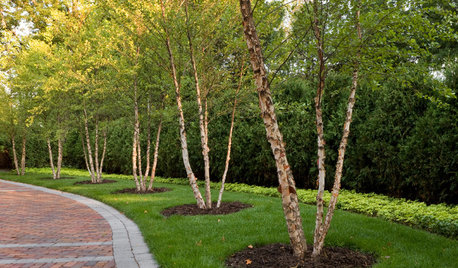
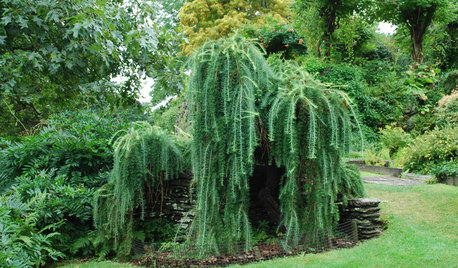

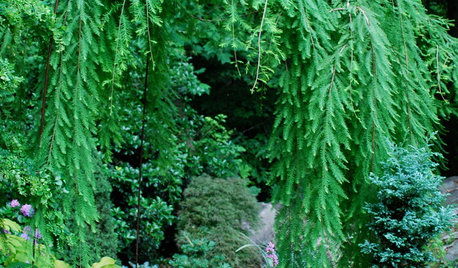
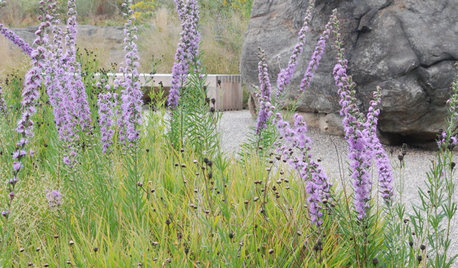


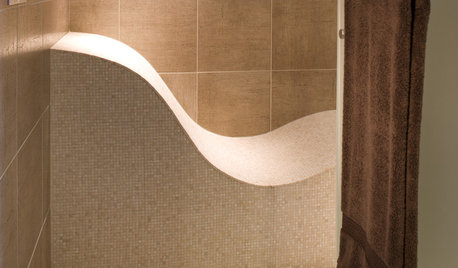











Dibbit